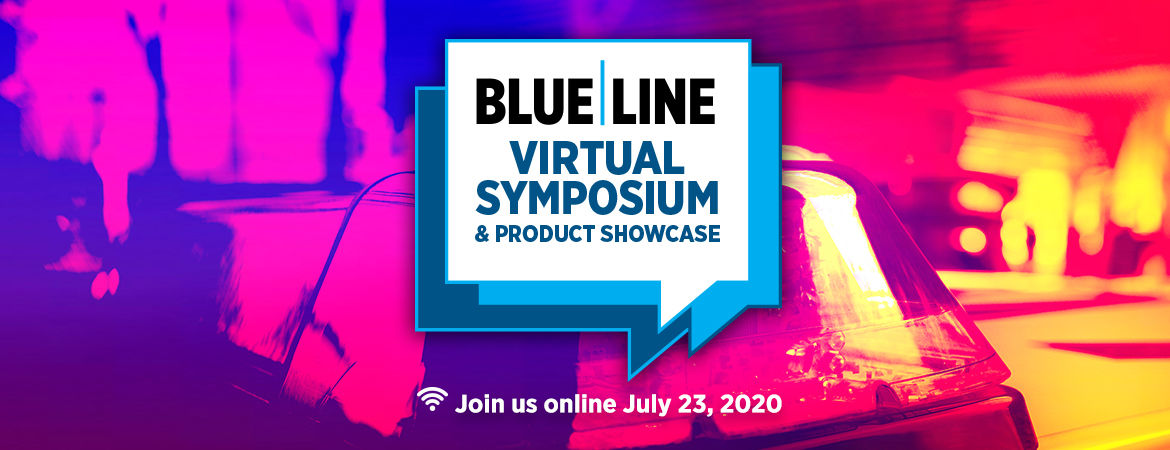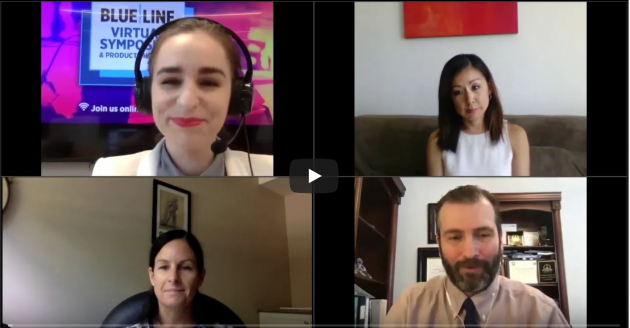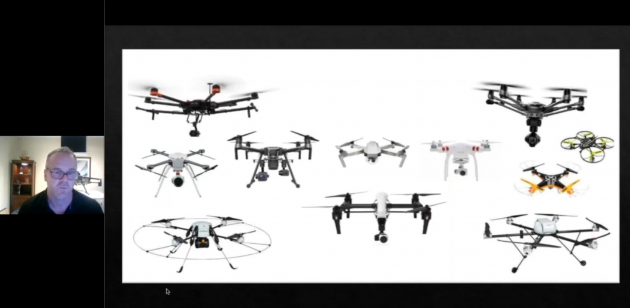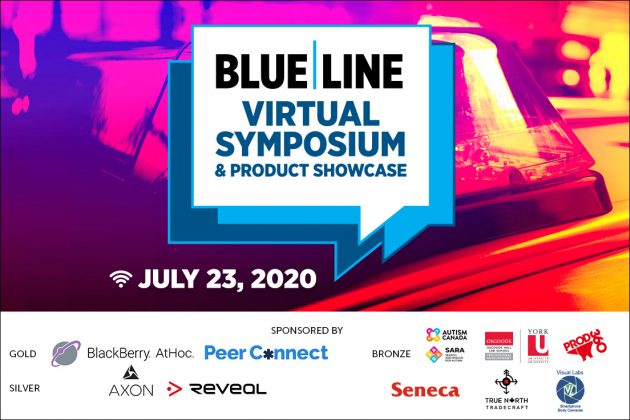
Features
Law enforcement in 2020: Inside the Blue Line Virtual Symposium
Best practices for wellness, technology insight and a synopsis of evidence-based training
August 7, 2020 By Staff

On July 23, in partnership with Annex Business Media, Blue Line hosted its first Virtual Symposium & Product Showcase in an effort to connect Canada’s diverse law enforcement members, from conservation officers to corrections officers to municipal, provincial and federal police officers and beyond.
Just over 200 people signed up.
In today’s intense global climate, police performance, decision making and officer mental well-being are just some of the critical topics Blue Line’s readers have on their minds. Our Virtual Symposium sought to speak to that, providing insight from subject matter experts on today’s trends and concerns for law enforcement.
Vancouver Police Chief Const. Adam Palmer, the president of the Canadian Association of Chiefs of Police, opened the event, followed by RCMP Commissioner Brenda Lucki. The Honourable Michael Tibollo, Ontario’s first Associate Minister of Mental Health and Addiction, also provided welcoming remarks.
Wellness in 2020
It’s been a particularly heavy year for Canadian law enforcement — we’ve had the pipeline blockades, managing the fury of COVID-19 and the subsequent lockdowns, and most recently the wave of protests against systemic anti-black racism and police brutality, following the global reaction to the killing of George Floyd in Minneapolis. With the open-to-interpretation #defundthepolice hashtag trending, our officers are feeling an array of weighty emotions in their professional lives and in their personal ones, too.
The Virtual Symposium & Product Showcase’s three-person panel looked at how all of this is impacting officer mental health and wellness overall, and how to continue to build resilience in this unique, quickly-evolving and difficult climate.
“We deal with people every day and we don’t know if they have COVID or not. Physical distancing is very hard when we have to go in and arrest people…”
“We’re seeing demoralization right now,” said Vivien Lee, a clinical psychologist and the founder of the Centre for Trauma Recovery & Growth in Toronto.
Konstantinos Papazoglou, a former police captain and now a postdoctoral scholar at Yale in New Haven, Conn., agreed with Lee about low morale being the number one concern currently with respect to overall police officer well-being.
“When morale is low, communication isn’t flowing the way it should or there is miscommunication,” added Sgt. Beth Milliard of York Regional Police. “Being a frontline patrol sergeant, COVID is on the minds of everybody. Obviously, we’re out on the road — we’re frontline — so we deal with people every day and we don’t know if they have COVID or not. Physical distancing is very hard when we have to go in and arrest people.”

She also pointed to officers in her agency who have contracted COVID from their frontline duties.
“Fortunately, they’re healthy now and have come back to work but I’ve talked to them and what they’re worried about now is the long-term effects of COVID. We don’t know what they are right now so that obviously weighs on people.”
The situation at the moment is creating a perfect storm, Lee added.
“Officers have been living with COVID, as we all have, but on the frontlines, and we’ve had our regular coping strategies ripped away… like going to the gym, spending time with friends, hugging mom…”
“A pandemic like this really hammers home that putting proactive measures in place – not just mental health ones but physical ones as well – and really promoting that as a leader, as a chief is important,” Milliard said.
Policing in a pandemic also interferes with some of the rewarding parts of the job.
“Officers might feel some reward in comforting family members of those who have lost someone, or a child, but now that we’re in this world of extra PPE, there’s that distance so they can’t provide that comfort and connect,” Lee elaborated.
What can we do to mitigate the exhaustion we’re seeing on the frontlines and to further boost mental health resilience among law enforcement?
“A pandemic like this really hammers home that putting proactive measures in place – not just mental health ones but physical ones as well – and really promoting that as a leader, as a chief is important,” Milliard said.
Senior leaders and supervisors must communicate what they know or don’t know is happening, Lee added.
“With all the increased stress 2020 has brought on, having that acknowledgement from senior leaders can go a long way,” she said.
For Milliard, checking in regularly is one of her strategies as a patrol sergeant.
“I drive around on patrol and grab a coffee with officers, get a feel for the shift and where everyone is sitting,” she said. “We also talk about gratitude and practicing that before our shift.”
Taking care of ourselves is also key. Lee said it’s crucial to find “pockets of decompression” where you just breathe, pause or do something pleasurable, even if it’s just for five minutes.
Modern police training
“Evidence-based” are two words we’re hearing a lot more of in our law enforcement circles. Steven Poplawski, the director of Step Training Inc., and Judith Andersen, an associate professor of psychology at the University of Toronto Mississauga, provided a definition before launching into their case for why a paradigm shift in police training is needed.
“The skills of handcuffing or operating a CEW (conducted energy weapon) were taught, without factoring in the human stress responses and physiology of the officer.”
“We want to change the approach to instruction education. We want to shift our attention to the officers themselves — what they are going through and what they’re thinking in their decision process,” Poplawski said. “Traditionally, police training has been focused primarily on learning skills to manage external factors. Research in physiology, learning and performance shows that if trainees learn how to manage their internal factors, they will be better prepared to learn and perform external skills in the field.”
Poplawski and Andersen provided examples of how training, and in-particular use of force training, focused course content on the physical skills associated to performance demands.
“The skills of handcuffing or operating a CEW (conducted energy weapon) were taught, without factoring in the human stress responses and physiology of the officer,” they said.
Internal factors include:
- Psychophysiological stress response
- Emotion regulation
- Situational Awareness
“Both emotion regulation and situational awareness rely on higher order brain processes like thinking and decision making,” Andersen said. “Thus, we need to make sure that the autonomic nervous system and the brain stem processes do not block those higher-order, cognitive functions. The good news is there are concrete, tangible and rapid techniques to modulate these autonomic stress arousal processes — things that we thought couldn’t be controlled before. And part of this is enhancing parasympathetic function during calls in ways that do not take away from the ability to response to situational demands.”
Andersen and Poplawski briefly described the iPREP Training Intervention, a training program they collaboratively developed, based on “thousands of hours of objective data collection with over hundreds of police officers” in Europe and North America.
“With iPREP, you’re learning about stress modulation so you’re going to impact all the other areas these officers are trained in — not just in the use of force capacity,” Poplawski said. “I know health and wellness is a major piece in any law enforcement organization right now’ iPREP speaks to that.”
iPREP also addresses the difference between knowing something versus applying it.
“We teach the ‘you factor,’ by which we mean, regardless of the skill or tool you’re trying to use, you are the common factor; it all comes down to you,” Poplawski
Said. “We have officers trying to use the taser at a distance that will not be effective, even though in training they’re instructed to allow for enough distance to achieve the correct probe spread for an effective deployment… So, we have to address the psychological factor in training because it effects the outcome… and we need objective standards.”
Technology tip offs
Earlier this year, Interpol released a new document, called a “Framework for Responding to a Drone Incident for First Responders and Digital Forensics Practitioners.” Interpol said it hopes this will serve as a reference tool for the many officers who still do not understand these technologies.
“Drones have become a permanent fixture in the current policing operating environment,” said Interpol Secretary General Jürgen Stock, “and one that can only grow in scale and impact in the future.”
With this in mind, Blue Line wanted to touch on this from a Canadian perspective. Andy Olesen and Colin Giles, both of Element 3 Robotics, and both with years of experience in the RPAS (Remotely Piloted Aircraft System) emergency services industry, helped do so.

Andy Olesen describes some of the UAV options today.
They walked us through how the industry was the wild west in 2016 up to today where there are now hundreds of drone manufacturers. Olesen touched on some newer UAVs, including the DJI Mavic Enterprise Dual (M2E), which boasts an edge recognition algorithm and a function called isotherm in which you can isolate specific temperature ranges in order to reduce false thermal signatures.
“Currently Transport Canada is working with first responders in order to develop and test the process for allowing ‘beyond visual line of sight flights,’” Giles continued. “This includes distances out to a number of kilometers but also simply flying around a structure where the RPAS team loses sight of the flyer.”
The Canadian First Responders Robotics Association (CERRA) recognized that there was a lack of consistency in operations and training — there are no recognizable standards in Canada.
They also introduced the fairly new Canadian First Responders Robotics Association (CERRA), which aims to move the industry forward together instead of in silos. Established initially as forum for aerial robots, the association is expanding to ground and water robots. CERRA recognized that there was a lack of consistency in operations and training — there are no recognizable standards in Canada. Using NIST (the National Institute of Standards Technology in the U.S.) test methods and principles to develop and promote standards, CERRA is leveraging relationships and developing guidance for operators for both initial training and currency.
While our live session focused on UAVs, the Virtual Symposium also featured on-demand content that looked at how an app made policing in a pandemic more efficient and body-worn cameras in a Canadian police context. Check those out at blueline.ca/virtualsymposium.
Thank you to the 2020 Blue Line Virtual Symposium sponsors: BlackBerry AtHoc, Axis Communications, First Response Mental Health, Axon Canada, Reveal Media, Commissionaires, Seneca College, Autism Canada, True North Tradecraft, Osgoode Professional Development, Visual Labs and Prod 360.

Print this page